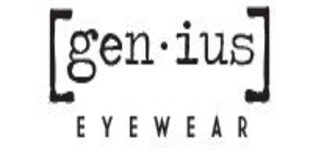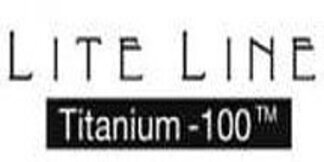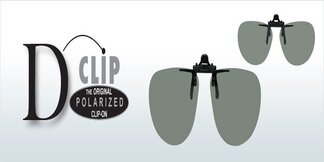Lampworking Glasses
Lampworking Glasses from VS Eyewear’s feature prescription and non-prescription safety and designer glasses for every type of hot Lampworking application and associated art. All of our lampworking lenses are optical-quality German glass, and our plastic lenses are optical-quality and scientifically engineered for the best VLT in their class. Lenses include IR, UV, and sodium flare protection, in various shades and combinations of these coverages. If you need Lampworking glasses for artistic or scientific applications we have what you need here.
We have the hot glass eyewear you need for artistic and scientific applications. You can order lampworking safety eyewear with a variety of filters here. These are the filters: BoroView 5.0, BoroTruView 5.0, BoroTruView 3.0, BoroView 3.0, Sodium Flare Poly (SFP), and Phillips 202 Ace Glass. We also carry a full line of eyewear in Light Green material for our Hot Glassworkers and Glassblowers.
We offer filters for both soft and borosilicate glasses, as well different types of work. There are filters for furnace work (with the option of gathering/slumping), smaller glass work and large glasswork. Plus, depending upon the filter, they are available in polycarbonate or glass lenses.
All of them have different levels of IR and UV protection. There are also different levels of clarity, color recognition and sodium flare blocking. Most of the filters also allow mirror coatings to be added.
Check out our selection of lampworking glasses. We’re confident you will find a solution that meets your needs and has the features and specs you desire. If you need help or more information about our products, we are just one click away: talk to us through our chat, e-mail us at [email protected], or call us at 1.877.872.5780
Lampworking Glasswork is where a torch or lamp melts the glass. Once the glass has melted, it is formed using tools and hand movements. Because it no longer uses oil-fueled lamps, it is sometimes called flameworking and torchworking. It is difficult to know when lampworking was first developed. However, it is possible to identify the origin of lampworking from a collection made of beads in . Murano and Italy were the first to practice the technique. Itinerant glassworkers began to demonstrate lampworking as early as 17th-century. [2] By the middle of the 19th century, lampworking was expanded to produce paperweights. This technique is still popular today. In contrast to glassblowing, lampworking uses a furnace for primary heat. However, torches can also be used.
Lampworking began in an oil lamp. The artist would blow air into the flame using a pipe or foot-powered bellows. Hobbyists often use MAPP gas in portable containers for fuel, while others use oxygen concentrators to provide continuous oxygen.
Lampworking can be used to create art, such as beads, ornaments for Christmas trees, marbles and small vessels. It can also be used to make scientific instruments and glass models of animals and botanical subjects.
Lampworking Glasses from VS Eyewear’s feature prescription and non-prescription safety and designer glasses for every type of hot Lampworking application and associated art. All of our lampworking lenses are optical-quality German glass, and our plastic lenses are optical-quality and scientifically engineered for the best VLT in their class. Lenses include IR, UV, and sodium flare protection, in various shades and combinations of these coverages. If you need Lampworking glasses for artistic or scientific applications we have what you need here.
We have the hot glass eyewear you need for artistic and scientific applications. You can order lampworking safety eyewear with a variety of filters here. These are the filters: BoroView 5.0, BoroTruView 5.0, BoroTruView 3.0, BoroView 3.0, Sodium Flare Poly (SFP), and Phillips 202 Ace Glass. We also carry a full line of eyewear in Light Green material for our Hot Glassworkers and Glassblowers.
We offer filters for both soft and borosilicate glasses, as well different types of work. There are filters for furnace work (with the option of gathering/slumping), smaller glass work and large glasswork. Plus, depending upon the filter, they are available in polycarbonate or glass lenses.
All of them have different levels of IR and UV protection. There are also different levels of clarity, color recognition and sodium flare blocking. Most of the filters also allow mirror coatings to be added.
Check out our selection of lampworking glasses. We’re confident you will find a solution that meets your needs and has the features and specs you desire. If you need help or more information about our products, we are just one click away: talk to us through our chat, e-mail us at [email protected], or call us at 1.877.872.5780
Lampworking Glasswork is where a torch or lamp melts the glass. Once the glass has melted, it is formed using tools and hand movements. Because it no longer uses oil-fueled lamps, it is sometimes called flameworking and torchworking. It is difficult to know when lampworking was first developed. However, it is possible to identify the origin of lampworking from a collection made of beads in . Murano and Italy were the first to practice the technique. Itinerant glassworkers began to demonstrate lampworking as early as 17th-century. [2] By the middle of the 19th century, lampworking was expanded to produce paperweights. This technique is still popular today. In contrast to glassblowing, lampworking uses a furnace for primary heat. However, torches can also be used.
Lampworking began in an oil lamp. The artist would blow air into the flame using a pipe or foot-powered bellows. Hobbyists often use MAPP gas in portable containers for fuel, while others use oxygen concentrators to provide continuous oxygen.
Lampworking can be used to create art, such as beads, ornaments for Christmas trees, marbles and small vessels. It can also be used to make scientific instruments and glass models of animals and botanical subjects.



























































